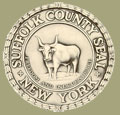Back to how to care for your lawn
Back to fertilizing your lawn
|
For homeowners:
Sources and properties of lawn fertilizers
No matter which kind of fertilizer you use on your lawn - organic or inorganic, quickly available or slowly available - care must be taken to provide the correct amount of fertilizer at the right rate and at the right time. In other words, problems can occur with any fertilizer source if applied improperly. (For application tips, see Simple Spreader Calibration and Simple Spreader Calibration Worksheet and Example Worksheet
It would be helpful to have a few definitions commonly used to describe the different fertilizer sources.
- Organic fertilizers contain carbon and are derived from living organisms. Corn gluten meal, feather meal, composted manure and bio-solids are examples of natural organic fertilizers derived from plant and animal residue.
- Synthetic organic fertilizers are “man made” or chemically altered organic materials. Some examples include: urea, IBDU and polymer-coated ureas.
- Inorganic fertilizers are mined materials and/or manufactured that do not contain carbon. Some examples include: ammonium sulfate, calcium nitrate and potassium nitrate.
Generally speaking, organic fertilizer sources are low in nutrients. However, they are an important soil amendment and contribute to the overall health of the soil.
These charts compare the advantages and disadvantages of different fertilizer sources:
|

